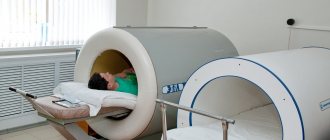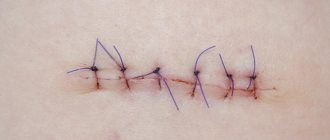250
After the walls of the coronal part collapse, hard tissues begin to deteriorate more intensively. The “stump” remaining in the hole becomes a source of infection, which begins to spread to surrounding structures, including gum tissue, jawbone and neighboring teeth.
This causes the development of multiple caries, periodontal diseases and other equally dangerous pathologies.
In some clinical cases, tooth extraction requires suturing the hole after the manipulation. Preservation of an empty wound with suture material is not always required, but in some cases it cannot be avoided.
Indications for surgery
Many people are concerned about the question of whether it is possible to remove wisdom teeth, and what are the indications and contraindications for this. Each person is individual, which is why if there are complaints of pain, the doctor must perform an examination to choose a treatment method. Among the main indications for removal are the following:
- incorrect position in the dentition;
- severe pain radiating to other areas;
- swelling;
- destruction of adjacent teeth;
- impossibility of proper treatment of caries;
- cheek injury;
- the occurrence of pericoronitis.
Doctors distinguish between complex and simple removal. The procedure for removing a tooth located in the bone or on the lower jaw is a very complex manipulation and requires high professionalism of the doctor. The removal operation consists of several stages, these are:
- inspection;
- anesthesia;
- extraction of a tooth or root.
If the tooth is located in the bone, then before removing it, the gum is cut and the bone tissue is drilled out. When removing lower teeth, conduction anesthesia is initially given and infiltration anesthesia is added to it. In case of removal of the upper wisdom tooth, only infiltration anesthesia is performed, since the bone of the upper jaw is porous, therefore, pain relief occurs much earlier.
What suture materials are used
After removing a wisdom tooth, the dentist applies sutures when there is a large hole remaining in place of the tooth. The main purpose of their application is to prevent infection. In addition, it helps prevent severe bleeding.
In case of severe suppuration of the tissues around the tooth, suturing is not performed before the removal procedure, but a tube drainage is placed in the wound, which is fixed with a thread. A variety of suture materials are used for wound suturing, and their choice largely depends on the nature of the operation.
The classic option is Catgut thread. It dissolves on its own within 2 weeks, however, when used in some cases, inflammation may occur. Vicryl threads are also widely used. This is a high-quality synthetic material that does not provoke inflammation. It is worth noting that the period of its resorption is approximately 30 days, however, often this period does not need to be maintained; they can be removed earlier.
Precautions after removal
A suture in the oral cavity cannot be hidden under a special bandage, as with any other operation. A person is required to follow certain precautions to avoid damaging the suture material:
- Do not touch the threads. This applies not only to hands, but also to any other objects.
- At first, you should not rinse your mouth or smoke.
- You cannot refuse hygiene procedures, since during this period it is especially necessary to keep your teeth clean. But the procedure should be carried out very carefully so as not to violate the integrity of the suture material, not to catch the edges of the wound, or to cause bleeding.
- To prevent an increase in blood pressure on the first day after surgery, you should not take a hot bath, visit a bathhouse, or a sauna.
- You should not drink alcohol for 24 hours after wisdom tooth removal.
- You should rinse your mouth with the compositions prescribed by your doctor. Using conventional rinses can lead to irritation of injured tissues.
- Do not open your mouth too wide, as the stitches may come apart.
- Warm compresses on the cheek should be avoided. It's better to apply ice. This will help relieve pain and promote rapid blood clotting.
Why are stitches required?
Sutures after wisdom tooth removal are applied quite often. To remove the outermost teeth, the surgeon must make 1-2 incisions on the gum. After this, careful extraction is carried out.
It is often necessary to get stitches after wisdom teeth are removed. They can also be applied when there is swelling on the gum. Swelling of soft tissues is considered a completely normal process after a gum incision. If the dentist applies the stitches correctly, the wound should heal without consequences. In this case, heavy bleeding should not occur, as it will interfere with suturing.
Regardless of which threads will be used during the operation, the suturing procedure does not take much time. However, the most convenient are self-absorbing sutures after wisdom tooth removal, since in this case no additional trauma to the body will be required to remove them.
The quality of the remaining scar and the healing time of the hole depend not only on how exactly the suture is applied, but also on the possible occurrence of complications. Removal of outer teeth is one of the most complex dental procedures, therefore complications cannot be ruled out.
How to care for sutures after tooth extraction?
Some dental procedures require surgery.
When removing a tooth that is deep in the gum, surgery cannot be done without surgery. In this case, manipulations in the oral cavity cause severe bleeding, so sutures are placed after tooth extraction. A closed wound is less susceptible to infection (the risk of virus entry is reduced by 90%). After the procedure, a blood clot forms in the gum, preventing bacteria from penetrating into the deeper layers of tissue. A sutured wound avoids displacement of this clot. Inflammation and suppuration as a result of food entering the damaged area are excluded. Open areas are sutured at the slightest sign of swelling. Stitching the tissues allows them to grow together qualitatively.
If it is necessary to extract a wisdom tooth from a patient, the dentist is forced to cut the gum to allow the procedure to be carried out unhindered. Removing the "eight" is a very difficult procedure. The tooth occupies a large volume and has deep roots. Often grows at an angle. Once the integrity of the tissues has been compromised, sutures are required after wisdom tooth removal.
Threading can be used by dentists if the patient is indicated for this procedure. For example, for people with blood clotting disorders. After suturing, after 7 days the doctor examines the oral cavity. If bleeding continues, the patient is prescribed medications and ointments to eliminate the problem.
Stitching
Sutures after wisdom tooth removal (photos on this topic are presented in the article) are applied in almost all cases of this dental procedure. Suturing is mainly carried out in rather complex cases, as well as in cases of very severe ruptures and injury to soft tissues. This manipulation is simply necessary to tighten the hole faster.
In addition, suturing helps prevent pathogens and food debris from entering the wound, since the cavity remains closed. This procedure helps the remaining wound heal faster and reduces the risk of bleeding.
How long does it take for the threads to dissolve on their own?
Absorbable sutures after wisdom tooth removal are convenient, since when they are used there is no need to further injure the area of the operation when removing the suture material. If high-quality suture material is used, its resorption period is 20-30 days. It is worth noting that after a certain time the threads simply disintegrate, and the person swallows them unnoticed. There is no particular discomfort or danger when threads get into the stomach.
The great advantage of using such material is that there is no need to additionally visit the dentist to remove them. After 1-2 weeks, you need to visit a doctor to make sure that the surgical intervention did not cause complications.
It is impossible to determine the exact time during which the sutures should dissolve. However, there are still approximate deadlines. Classic Catgut threads can hold seams for 10-140 days. Over time, under the influence of enzymes, they will disintegrate and be eliminated from the body. Now they are widely used. It is worth considering that such suture materials are strictly prohibited from being used if there is a high risk of inflammation and complications.
Synthetic threads Dexon and Vicryl can be used for suturing even in areas where there is a high risk of complications. This material is characterized by the fact that they do not cause inflammation, so they can be used for any operations.
You need to visit the dentist 1-2 weeks after the tooth extraction procedure for a control examination and, if necessary, removal of sutures.
The incision does not heal after wisdom tooth removal
Wisdom tooth removal is considered a full-fledged medical operation. Suturing after manipulation is a mandatory measure. Complications often occur after the procedure. To avoid trouble, you should follow your doctor's recommendations.
They removed the bottom eight, a wisdom tooth was coming out, and a suture was placed. A day later I came for an examination, they said everything was fine, and the next day after the examination the thread came out. During the day it’s tolerable, the pain is aching, but in the evening the pain is hellish, I haven’t slept for three days, there’s a deep cut between the cheek and gum. In this place there is a strong taste of rotten meat, especially if you run it with the tip of your tongue; in addition, some kind of acid appears in the taste. I rinse constantly, but neither the taste nor the smell disappears, and the pain bothers me even more.
What do you recommend in this case? A week has passed, the cut is not healing at all, the pain does not disappear even for a second, only less during the day!
Contact your doctor again. It is necessary to exclude the process of inflammation (periostitis). I also recommend taking antibiotics and continue rinsing.
Contact phone number
If the operation turned out to be difficult and the soft gum tissues were damaged, sutures are placed on them.
In particularly difficult situations, such as the removal of wisdom teeth, the doctor has to resort to stitches on the operated area.
Since the wisdom tooth grows deeply and has several roots, the dentist is forced to make incisions on the gums to properly extract the roots.
Sutures are placed on the gums for the purpose of:
- preventing bleeding from the wound;
- maintaining a blood clot in the socket;
- preventing food from getting into the wound;
- reducing the risk of socket injury;
- When a suture is applied, the wound heals faster.
Important! The larger the area of the operated surface, the more accessible it is to pathogenic bacteria. Therefore, they try to sew up the hole as much as possible so that bacteria do not get inside and cause an inflammatory process. In this condition, the soft tissues heal faster and the edges grow together better.
Removal of a molar tooth is not always accompanied by surgical intervention; in these cases, there is no need to suture the wound.
Removing stitches
Sutures are placed on the gums after wisdom tooth removal quite often, especially if difficulties arise during the operation. This is required for complete healing of the hole, as well as to prevent subsequent infection of the wound and prevent possible bleeding. Sometimes materials may be applied that then need to be removed. That is why it is important to know exactly when the sutures are removed after wisdom tooth removal, and how exactly this procedure is carried out.
Usually this procedure is performed on days 5-6. The removal of sutures after the removal of a wisdom tooth is carried out by the surgeon after an examination, since he must accurately determine the degree of fusion of the edges of the wound and the nature of the subsequent healing of the remaining hole. After that, he uses a special tool to remove the threads. Often this procedure is completely painless and does not take very much time. However, if a person tolerates pain very poorly, then you need to warn the dentist who will administer anesthesia.
The procedure for applying a flap to the gums
Here is the process a dentist uses to “set” a flap when performing a dental extraction surgery.
- First, he will need to use a local anesthetic ("Novocaine") to numb your gums in the area where the flap will be created.
- He will then use a scalpel to cut all the way through the gum tissue down to the bone. (This is called creating a “full-thickness mucoperiosteal flap,” which indicates that all layers of soft tissue covering the bone will be cut.)
- The gums will become numb and you will not feel any pain. However, you will feel the pressure of the scalpel as it makes the cuts.
- Once the gum has been cut, your dentist will open it up a bit. Here's how he'll do it: Where your gums and teeth meet, your dentist will insert a tissue "lift" (a hand-held tool that looks like a flat-blade screwdriver, only the blade is rounded and smooth). As the elevator rotates, the gums will gradually open up.
- After this, the surface of the bone will be completely exposed. Your dentist can now perform any dental procedure (bone removal or tooth sectioning).
- Finally, he will move the gum back into place to stitch it up.
Read also: A tooth was removed in the hole, something white
Oral care
If stitches were placed after wisdom tooth removal, additional treatment is necessary. Antiseptic rinses are used for this. They should be started 2 days after the operation. For this, solutions prescribed by the doctor are used, and you can also use infusions of medicinal herbs, salt baths, and also a solution of “Furacilin”. Rinsing should be done 2-3 times a day, holding the medicinal solution in the mouth for several minutes.
If the sutures hurt after wisdom tooth removal, you can additionally take painkillers, in particular, such as Ketanov, Solpadein, Dolaren. However, they can only be taken after prior consultation with a doctor, since many analgesics have a number of contraindications.
To prevent the development of inflammation in the postoperative period, the dentist may prescribe the patient the use of anti-inflammatory drugs, namely Nimesil, Mefenamic acid. It is also possible for the doctor to prescribe antibiotics and anti-allergenic drugs. To avoid the risk of complications, the patient must adhere to the treatment prescribed by the doctor.
Dentists' recommendations
During the process of tooth extraction, the ligaments that hold it are injured, and soft tissues and blood vessels are torn. As a result, blood begins to be released from the hole. Immediately after the procedure, a gauze pad is applied. In some cases, stitches are required. Upon returning home, it is not recommended to rinse your mouth for the first 2 days, unless prescribed by your doctor.
After the anesthesia wears off, pain will occur in the area where the tooth was removed. If the pain is very severe, dentists recommend taking painkillers. It is worth remembering that the drug must be prescribed by a doctor. If the pain does not go away, then you need to consult a dentist.
If the operation went without complications, then literally after 2 hours you can start eating. You just need to avoid chewing on the side where the extracted tooth was located. Also, for several days you need to exclude from your diet foods that can irritate the remaining socket. After eating, it is advisable to rinse your mouth with just warm water.
You need to inform your dentist about taking medications. This is necessary so that the doctor can select an anesthetic and other drugs for postoperative care. In the first 1-2 days, you need to completely avoid stress, as it can cause bleeding from the socket.
In what cases does pain become a symptom of complications?
We found out how long a tooth should hurt after its removal and how long the recovery takes. But what to do if the symptom becomes more pronounced, the pain does not subside, and more than 5 days have passed since the procedure - complications have probably appeared. If the mucous membrane in the causative area is swollen and red, there is no blood clot in the hole and there are signs of suppuration, you need to urgently go to the doctor. Let's consider the main prerequisites for the development of complications.
Due to the fault of the dental surgeon
Sometimes problems arise due to the surgeon’s mistakes and shortcomings that were made during the procedure. Here are the most common medical errors that can lead to complications:
- burn of bone tissue during treatment with a drill - if the specialist does not use a handpiece with a supply of coolant, in most cases a thermal burn occurs, which can lead to the development of superficial necrosis and, accordingly, pain. In this case, it is better to immediately consult a doctor to undergo appropriate therapy,
- trauma to the mucous membrane by the sharp edges of the bone walls remaining after removal - if the interradicular bone septum is too high, its edges can protrude above the blood clot, injure the soft tissues of the oral cavity and provoke inflammatory processes,
- tooth fragments in the wound - an incompletely cleaned hole can also lead to tissue infection and the development of inflammation. To remove the fragments, you will need to see a doctor again,
- “dry socket” is the name given to a pathological phenomenon in which a blood clot is damaged or its formation does not occur at all. The reason may be the patient’s incorrect actions during the rehabilitation period, as well as incorrect technique for performing the procedure. For example, this happens if a specialist injects too much anesthetic with a component that causes vasospasm - a vasoconstrictor. This may prevent the formation of a protective clot and normal tissue healing,
- refusal to apply sutures - sometimes doctors decide that there is no particular need for sutures, even if for removal they needed to peel off a small area of the mucous membrane. If the situation is in doubt, it is better to apply at least one suture to avoid undesirable consequences,
- refusal of antibiotics - after extraction, a specialist usually prescribes antibiotics that prevent the spread of infection in injured tissues. If the doctor has not prescribed any medications, the risk of complications will increase many times over.
If the tongue constantly clings to sharp fragments of the tooth remaining in the sockets, a painful reaction to cold and hot liquid appears, the pain intensifies, the blood clot is not in its place, and the breath smells bad - you need to urgently consult a dentist. It is important to do this as quickly as possible in order to stop the pathological process at its very beginning.
Due to the development of the inflammatory process
When a blood clot is damaged, an inflammatory process often develops - the open wound becomes a fertile environment for the proliferation of bacteria and further infection of tissues. In this case, the pathological process may be accompanied by the release of pus from the socket, the appearance of an unpleasant odor, severe swelling and pain. This inflammatory complication is called alveolitis.
A similar situation can arise both through the fault of the surgeon and the patient himself. For this reason, it is extremely important to strictly follow all the specialist’s instructions during the rehabilitation period, do not rinse the mouth too intensely, avoid the vacuum effect, and eating too hard or viscous food. Treatment requires cleaning the hole from remnants of a blood clot and purulent masses, disinfecting tissues and putting anti-inflammatory medicine into the open wound.
Due to suppuration
Sometimes the blood clot in the wound becomes denser, but no signs of the inflammatory process appear. In such cases, symptoms usually occur indicating the formation of a hematoma and its suppuration:
- the appearance of asymmetry in the face, severe swelling of the gums and cheeks,
- elevated temperature,
- increased pain when touching the gum near the extracted tooth,
- tension of the mucous membrane over the source of suppuration,
- the appearance of cyanosis on the skin in the area of hematoma formation.
Such a nuisance may be associated with accidental damage to the vessel during the administration of anesthesia. At risk are patients with hypertension and diabetes mellitus, as well as those who took aspirin the day before. In this case, you need to go to the dentist - a specialist will cut the tumor, remove the pus and treat the wound with an antiseptic. It may be necessary to install a drainage system to drain purulent masses.
After complex extraction
If there is a complex tooth extraction, for example, an impacted and dystopic number eight, the doctor will need to make a fairly large incision on the mucous membrane, peel off a section of the gum in order to be able to easily remove the element. The procedure may take time, and the rehabilitation period may be complicated by severe symptoms.
“I had my wisdom tooth removed under sedation, because I was very afraid. And then, towards evening, the gums swollen so much that my cheek was swollen. I had to urgently go to the dentist. As it turned out, there was an abscess. Apparently the wound had festered. I had to cut the gum again, remove the pus, and treat it with antiseptics. Then everything took a long time to heal. I won’t delay things like this any longer and I don’t recommend you do so.”
What is prohibited to do
If you put sutures on the wound after removing a wisdom tooth, then you must follow these rules:
- You can’t open your mouth too wide or smile;
- It is forbidden to consume very hot or hard food;
- You cannot make sudden facial movements;
- eliminate alcohol consumption.
At the first sign of complications, you need to visit the surgeon who performed the procedure to remove the outermost tooth. In emergency cases, you should consult a doctor.
Does it hurt to remove stitches and when is it done?
On what day are the threads removed? If simple materials were used, then after a week the doctor should examine the wound and decide whether to remove them or leave them for a few more days until complete healing. And although the process is not painful, sensitive patients still report different levels of discomfort. Local topical anesthesia can be used in extreme cases of intense pain, which is very rare.
Read also: How much should you not drink after tooth extraction?
The doctor cuts the threads using scissors and uses small tweezers to pull out each part separately. If a week after the operation, suppuration of the suture is noticed, then it is necessary to remove the artificial material from the wound as soon as possible and treat it.
In a situation where a patient discovers at home that the stitches have come apart, they should immediately contact a specialist. He will decide what should be done and whether it is worth reapplying them.
What to do if the seams diverge
In some cases, it happens that the stitches come apart after the removal of a wisdom tooth; a photo of the damage helps determine the presence of a problem. If there are signs of suture separation, you need to visit the dentist, as he must examine the wound and assess its condition. After this, he decides whether to leave everything as is or re-apply them.
If the suture comes apart after the removal of a wisdom tooth in the first days, then re-application is necessary, as there is a risk of complications. If a piece of food has managed to get into the opened hole, you should not try to pull it out yourself, as this can lead to injury to the gums. You need to visit the dentist who performed the removal of the outermost tooth.
If the suture comes apart after the removal of a wisdom tooth, when the wound has almost healed, then you don’t have to go to the dentist for several days, provided, however, that nothing bothers the patient. In any case, it is not recommended to avoid visiting the dentist, as he must make sure that there are no sutures or foreign objects left in the gums.
Possible complications
In some cases, complications may occur after wisdom tooth removal. Among the main provoking factors it is necessary to highlight the following:
- decreased immunity;
- the presence of caries on neighboring teeth;
- hypertension;
- stomatitis, gingivitis;
- smoking;
- poor blood clotting;
- medical errors.
Removing a wisdom tooth provokes additional problems during treatment. After 1-2 days, discomfort may occur at the suture site. In this case, you need to visit the dentist. Gradually the pain and swelling goes away. If swelling and discomfort remain, this may indicate the development of complications.
On the first day after the operation, small amounts of blood may be observed in the saliva, which is considered a completely normal manifestation. However, if the bleeding is severe enough, it is important to visit a dentist immediately to correct the problem. Most likely, you will have to re-stitch the stitches.
In the postoperative period, the patient’s well-being largely depends on the dentist’s instructions and ensuring proper wound care.
Gum healing period
After the patient has gotten rid of the affected wisdom tooth, he begins to be interested in the question of returning to the usual rhythm of life, that is, the period that will be required for complete healing of the gums. It should be borne in mind that wisdom tooth extraction is a full-fledged operation, so you cannot expect that the gums will heal in a few days.
Read also: Dental prosthetics after extraction
How long does it take?
If the removal was performed correctly, the edges of the wound will completely heal in 14 to 17 days. In parallel, the processes of formation of young bone tissue and beams occur. In case of traumatic removal, accompanied by rupture of soft tissues, the epithelization process may take 1–2 months. The formation of young bone and the formation of a full-fledged gum cover in the socket area is completed 4 to 5 months after surgery.
How to speed it up?
Upon examination, the doctor may note that healing is too slow. If it is not caused by an inflammatory process or infection, in order to speed up regeneration, it is recommended to use Solcoseryl dental or Methyluracil. Methyluracil ointment is applied to the wound surface after antiseptic treatment twice a day. Solcoseryl dental is applied 3 to 5 times a day after meals or before bed. Fresh wounds are treated with a gel, and areas where epithelization has begun are treated with ointment.
Consequences of long healing
The development of inflammatory processes leads to prolonged healing of the gums after extraction. In most cases, we are talking about alveolitis, but in the absence of complete timely treatment, it leads to the onset of limited osteomyelitis of the jaw. When extracting the lower third molar, prolonged healing due to infection provokes an abscess, phlegmon, and leads to sepsis, which threatens not only the health, but also the life of the patient.











